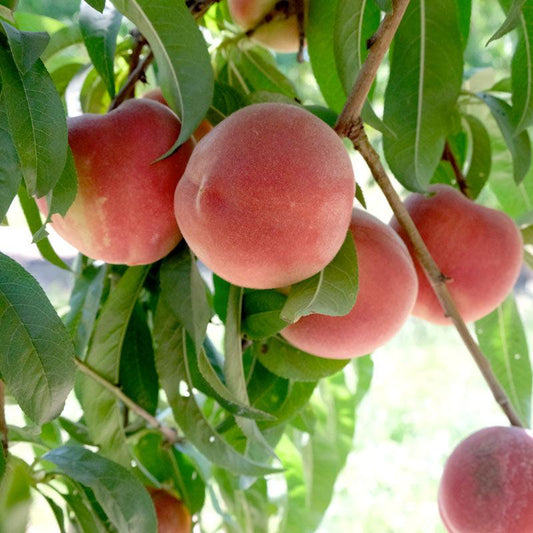Grow Delicious Peaches with Bare Root Peach Trees
Why Choose Bare Root Peach Trees?
Bare root peach trees are a cost-effective, efficient way to start your orchard or home garden. Shipped dormant with exposed peach roots, these trees are easy to plant during late winter or early spring. With proper care, a bare root peach tree will establish quickly, thrive in full sun, and produce juicy, flavorful peaches for years to come.
Selecting the Right Peach Trees Varieties
Choosing the right peach trees varieties is essential for a productive and healthy harvest. Our bare root peach trees for sale include time-tested cultivars like Elberta, Redhaven, and Indian Free—known for excellent flavor, disease resistance, and adaptability to different climates.
-
Freestone peaches are ideal for fresh eating; their flesh separates easily from the pit.
-
Clingstone varieties hold their shape well, making them perfect for baking and preserving.
-
Low-chill varieties are best suited for warmer regions (USDA zones 9 and above).
No matter your climate, there's a perfect bare root peach tree to meet your needs.
Planting Bare Root Peach Trees
To ensure success when planting bare root peach trees, follow these best practices:
- Choose a site with at least 6–8 hours of full sun daily.
- Use well-drained, fertile soil with a pH between 6.0 and 7.0.
- Dig a wide hole to allow peach roots to spread out naturally.
- Position the tree so the root collar is level with the ground.
- Backfill gently to eliminate air pockets.
Plant during the dormant season (late winter to early spring) to encourage strong root development and healthy spring growth.
Caring for Your Bare Root Peach Tree
Once planted, your bare root peach tree will need consistent care to reach its full potential:
- Prune in late winter to remove dead or diseased branches and promote an open center shape for light penetration.
- Water regularly, especially in the first year, keeping the soil moist but not soggy.
- Fertilize in early spring using a balanced formula to support strong growth and fruit development.
- Thin fruit clusters to reduce competition and grow larger, sweeter peaches.
Growth Habit and Full Grown Peach Tree Size
The size of a full grown peach tree depends on the variety:
- Standard peach trees grow larger and produce higher yields, but need ample space.
- Semi-dwarf and dwarf peach trees are perfect for small gardens or containers, offering easier maintenance without sacrificing fruit quality.
Understanding the growth habit of your selected bare root peach tree helps you plan your space and care routine effectively.
Disease Resistance and Climate Adaptation
All of our bare root peach trees are chosen for superior disease resistance and climate suitability. Selecting trees that match your USDA zone and required chill hours reduces the risk of issues like peach leaf curl, brown rot, and poor fruit set.
Why Buy Bare Root Peach Trees From Us?
When you buy from us, you're choosing from a curated selection of healthy, vigorous bare root peach trees with strong peach roots, excellent pollination potential, and proven performance in a wide range of climates. Whether you’re planting a single bare root peach tree in your yard or designing an orchard of peach trees, we provide the knowledge and quality trees to help you succeed.
Start Growing Your Own Peaches Today!
Looking for peach trees that offer high yield, superior flavor, and easy maintenance? Browse our wide selection of bare root peach trees and get started on your journey to growing a productive and beautiful orchard.
Peach Tree Growing Resources
Explore these helpful guides to support every stage of your peach-growing journey:
 Sold out
Sold out Sold out
Sold out Sold out
Sold out Sold out
Sold out Sold out
Sold out Sold out
Sold out Sold out
Sold out

































